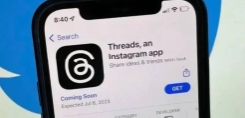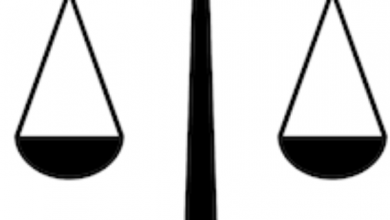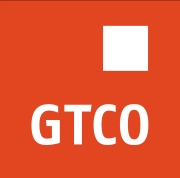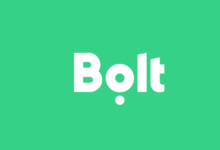
How to sign up on new Twitter rival app, Threads
CITIZENS COMPASS – Mark Zuckerberg’s Threads, a new social media platform for Instagram users, went live on Thursday and is taking aim at Twitter as a new option for people who don’t like the changes Elon Musk has made since he bought Twitter in October 2022.
More than 30 million people have signed up for Threads as of Thursday. It’s available in over 100 countries and 30 languages. Celebrities including singer Shakira, NFL star Tom Brady and chef Gordan Ramsay are already on board.
Is Threads simply a clone of Twitter or could it bring about the end of the bird app? Here’s what to know about Threads by Instagram.
Here is everything we know so far about Meta’s Threads:
What is Threads?
Threads was created by Meta, the parent company of Facebook, Instagram and WhatsApp. Similar to Twitter, the app has a feed of largely text-based posts. People can have real-time conversations and share photos and videos.
Threads have a 500-character limit and users can reply to, repost and quote other Threads posts. The app borrows Instagram’s aesthetic and navigation system and offers the ability to share posts from Threads directly to Instagram Stories.
“The goal is to keep it friendly as it expands,” CEO Mark Zuckerberg said in a Threads post. “I think it’s possible and will ultimately be the key to its success. That’s one reason why twitter never succeeded as much as I think it should have, and we want to do it differently.”
Some users did experience occasional glitches and issues getting content to load in the early hours after Threads launched, but that is to be expected when millions of users are joining and using an app at once.
How does Threads differ from Twitter?
The Threads app, operated by Meta Platforms Inc., on a smartphone, besides a Threads logo
PAUL HANNA/BLOOMBERG VIA GETTY
While Zuckerberg’s Threads has been deemed by techies as a near-identical comparison to Musk’s Twitter, there are several differences between the two conversation-based social media platforms.
The transfer of users’ Instagram followers and the accounts they’re following to Threads is a significant difference compared to Twitter. Similar to Twitter, however, Threads allows its users to upload their posts to Instagram Stories.
Another major difference between Threads and Twitter is the order in which posts are listed in users’ feeds. Like Instagram and Facebook, Threads timelines are purely algorithmic, meaning posts don’t show in reverse chronological order to show the most recent posts like Twitter timelines.
Furthermore, the algorithm-driven timeline also includes posts created by accounts that users don’t follow – similar to Twitter’s “For You” tab, an alternate timeline that’s separate from users’ main feed solely featuring accounts they follow.
Unlike Twitter, Threads doesn’t limit the amount of posts users can consume daily. A few days before Threads launched, Twitter imposed a boundary that limits users to 600 posts a day and those paying a monthly subscription fee to 6,000 posts a day.
Elon Musk Announces Linda Yaccarino as New Twitter CEO: ‘I Am Excited’
Like previously mentioned, Threads is a mobile-only platform; Threads users can read posts on Threads.net, but they can’t post or interact. Twitter, in comparison, is accessible via desktop and the Twitter app.
Hashtags, a popular feature on Twitter (in addition to Instagram and Facebook), are not available on Threads. The platform also does not allow its users to search for specific content like the aforementioned.
Similarly, there’s no trending section on Threads. Therefore, the posts users are offered are subject to the algorithm Meta displays in their timelines.
Also, Twitter has ads and Threads does not. But as Zuckerberg mentioned in a reply post to one user, only time will tell before monetization is implemented.
How does Threads differ from Twitter?
While Zuckerberg’s Threads has been deemed by techies as a near-identical comparison to Musk’s Twitter, there are several differences between the two conversation-based social media platforms.
The transfer of users’ Instagram followers and the accounts they’re following to Threads is a significant difference compared to Twitter. Similar to Twitter, however, Threads allows its users to upload their posts to Instagram Stories.
Another major difference between Threads and Twitter is the order in which posts are listed in users’ feeds. Like Instagram and Facebook, Threads timelines are purely algorithmic, meaning posts don’t show in reverse chronological order to show the most recent posts like Twitter timelines.
Furthermore, the algorithm-driven timeline also includes posts created by accounts that users don’t follow – similar to Twitter’s “For You” tab, an alternate timeline that’s separate from users’ main feed solely featuring accounts they follow.
Unlike Twitter, Threads doesn’t limit the amount of posts users can consume daily. A few days before Threads launched, Twitter imposed a boundary that limits users to 600 posts a day and those paying a monthly subscription fee to 6,000 posts a day.
As previously mentioned, Threads is a mobile-only platform; Threads users can read posts on Threads.net, but they can’t post or interact. Twitter, in comparison, is accessible via desktop and the Twitter app.
Hashtags, a popular feature on Twitter (in addition to Instagram and Facebook), are not available on Threads. The platform also does not allow its users to search for specific content like the aforementioned.
Similarly, there’s no trending section on Threads. Therefore, the posts users are offered are subject to the algorithm Meta displays in their timelines.
Also, Twitter has ads and Threads does not. But as Zuckerberg mentioned in a reply post to one user, only time will tell before monetization is implemented.
Where is Threads available?
Threads is available in 100 countries and more than 30 languages via Apple’s iOS and Android, according to the company.
Could Threads be the ‘Twitter killer’?
Threads is just the latest platform launched in recent months in hopes of unseating Twitter as the go-to app for real-time, public conversations. But it may have the greatest chance at success.
Many Twitter users have expressed desire for an alternative since Musk took over the platform late last year. Frequent technical issues and policy changes have sent some noteworthy Twitter users heading for the exits.
Meta has at least one significant leg up on Twitter: the size of its existing user base. Meta is hoping to capture at least some of its more than 2 billion global active Instagram users with the new app. That’s compared to Twitter’s active user base, which is somewhere around 250 million.
“It’ll take some time, but I think there should be a public conversations app with 1 billion+ people on it,” Zuckerberg said in a Threads post. “Twitter has had the opportunity to do this but hasn’t nailed it. Hopefully we will.”
In a tweet on Thursday, Twitter’s new CEO Linda Yaccarino appeared to acknowledge the rival app’s launch, calling Twitter “irreplaceable.”
“We’re often imitated – but the Twitter community can never be duplicated,” she said.
Meta’s existing scale and infrastructure could play to its advantage.
But Instagram CEO Adam Mosseri noted in a video posted to the platform that the challenge for new social media platforms often is not getting users to sign up, but rather keeping them engaged long-term.
What else is in it for Meta?
For Meta, Threads could be a way of eking additional engagement time out of its massive existing user base.
Although there are no ads on the platform just yet, Threads could also ultimately supplement Meta’s core advertising business. Meta’s ad business could use a boost after facing challenges from a broad decline in the online ad market and changes to Apple’s app privacy practices, although, if Twitter’s history is any guide, the format is unlikely to attract as many ad dollars as Meta’s other platforms.
For Zuckerberg, though, the real draw may be in attempting to best his rival, Musk, with whom he has in recent weeks been making plans to engage in a cage fight. Perhaps winning in the battle of social networks is even better.
How do you sign up? (And can you leave?)
Download the App For iPhone users, visit the App Store, while Android users should head to the Play Store. Once there, tap the search bar icon at the bottom right of your screen, enter “Instagram Threads,” and select the app from the search results. Download and install it on your device.
Sign Up, launch the threads app: Tap the “Log in with Instagram” button to sign in using your Instagram account. To import your profile information from Instagram, tap the “Import from Instagram” button. Alternatively, you can manually enter your bio, link, and profile picture by tapping on each respective icon. Once done, tap “Next.”
Choose Your Profile type: decide whether you want a Public profile or a Private profile. After making your selection, tap “Next” to proceed.
Follow Accounts; A list of people you follow on Instagram will appear. To follow all of them on Threads, tap the “Follow all” button. Alternatively, tap the “Follow” button next to individual names to select specific accounts to follow. If you prefer to skip this step, tap the “Next” button in the upper-right corner.
Join Threads: Finally, tap “Join Threads” to complete the process.
You have successfully signed up for Instagram Threads and are ready to explore the app’s features. The home page displays all the Threads and posts from the accounts you follow, while the Search page offers recommended accounts and enables you to search for specific users.
Additionally, you will find dedicated sections for composing new Threads, managing notifications, and viewing your profile.
Bearing similarities to Twitter, Mark Zuckerberg’s “Threads by Instagram” is set to leverage the lapses of Musk’s birdie app.







